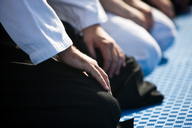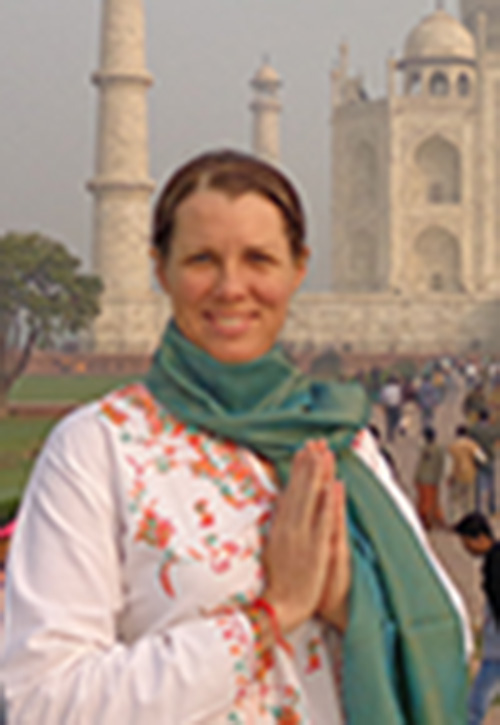
Actually not only am I enjoying it but I truly feel like I am creating my best practice yet. I find I am holding my awareness for longer than I did prior to my Christmas practice sabbatical and relishing the time to develop more meaningful connection to the yoga asanas. It’s not that my practice was not meaningful before, it’s just it feels different now. Perhaps I am developing a deeper understanding of myself and learning to nurture myself in yoga and through yoga.
While it is only still early days in getting back into a daily practice again (it’s only been 14 days really), I feel it is relevant to share some valuable tips with you on how to reinvigorate your relationship with your practice. Perhaps you would like to start a practice and are finding a lack of motivation creating a barrier for you to strike a pose.
Motivation
Find your reason for practicing.
For me I already knew the positive effects of yoga on my physical, mental and emotional wellbeing. I could effectively step outside of myself and see the benefits yoga had on my life. I could also see the impact NOT practicing was having on my psyche and the flow on effects for my relationships with people around me.
When I first started in my early 20’s and in subsequent years to follow after long periods of no yoga, my reason for coming back to the practice was physical. Yoga is a fantastic tool for strengthen and toning the body. I didn’t quite understand the full benefits for the mind and emotional body until quite recently. About 5 years ago it started to dawn on me the positive benefits on the mental state and harmonisation of mind and body – it was my motivation to start teaching and my drive to share this benefit with others.
Your motivation at first might come from the physical, it might come from your desire for time out for you or it might be something completely individual to you. Whatever it is put a name to it, write it down and commit to that reason.
Accountability
Find a buddy and tell them about your practice
This is extremely cliché but also highly effective. Setting an example for someone who you also know might benefit from yoga and meditation. Be warned though with this one can come with a nasty case of guilt if you fail to live up to that accountability. If you are someone who easily suffers from guilt I would probably not use accountability as a method of overcoming barriers simply because it can easily create more barriers for you. Alternatively share only with those who you know will not judge but rather encourage you if you happen to fall short of your daily practice on any given week.
Create your space
Make it easy to show up
Have a space which is exclusively for your practice. Even with a full house I have created an area which is used for my yoga and meditation. While I don’t keep my yoga mat and equipment rolled out, I do have everything handy that as I walk passed I can easily pick it up and move to my outside designated area.
Never limit yourself to this sacred space either. I have a back-up zone. If “my space” is being utilised by others I am flexible enough to move to another area. I have pre-designated areas I know I can use as needed.
Part of creating my space has also meant that I have communicated my intention to have “me time” to the other people in the house. In saying that I am also happy to have others join me in my practice as long as it is recognised I am doing the practice for me. Communicating to other household members has so far worked very well for me even creating some giggle moments between me and others. I have been in meditation and literally “felt” someone else in the room only to finish my meditation to find out a loved one has been in the room or a beloved pet has decided to join me in the silence.
Practice (or don’t practice) with Mindful Awareness
Make a decision and be happy with that decision
It’s okay not to practice. In fact I have “not yoga” days. Mostly this is on weekends when my husband is home. I chose to change my yoga practice on these days. The practice might include a mindfully made cup of tea followed by sharing the pot with my husband. I liken this to the Japanese Green Tea ceremony although in all fairness I am probably not as cultured in that art.
In saying that it’s important to acknowledge that a practice might not necessarily mean practicing yoga. Yoga takes many forms. Not all postures suit everyone and breathing and meditation can be practice without yoga postures. I have been rediscovering that no matter what happens during me-time so long as it’s done with mindful intention I know I have practiced well.
Show Up
Turn up for your practice and the rest takes care of itself
It is easy to forget this wonderful mantra when you are being swallowed up by life’s challenges and the barrier of your own fear, but the mantra of “just show up” has so much power it deserves a mention. I heard this mantra a few years ago and have used it many times since. I think I had just forgotten the power it can have. Showing up cannot make you downward facing dog but there is something about showing up day after day that causes change on a cellular level.
Towards the end of last year I was showing up to the mat but that bit was not working for me. I was present on the yoga mat, in my space but I was missing something and so I created this massive barrier to my practice. Eventually it dawned on me that I had stopped showing up to me. I was using yoga for everyone else. I wanted to “share” this great thing called yoga with everyone else that I had forgotten to share yoga with me. The mantra showing up now has taken a brand new energy feel for me. Now I show up to me. Well at least I am learning too. I think it will take some effort to keep doing it.
Plan Your Practice
Write out what you are going to do
Planning my practice was pretty easy. I had some physiotherapy exercises I had modified to be more “yoga-like” and I added yogic breathing and a meditation. If you have experience with yoga than you might choose an easy pranayama techniques and some foundational yoga poses to begin with. I started with my four physio-yoga poses and have built on these. Since I did have some prior knowledge and I knew that I wanted to improve my core yet was limited I chose to add Chair pose as my peak pose. I then used my knowledge to add one or two extra poses as a cool down.
Your practice does not need to be detailed. I would recommend starting with two or three poses. Start small and build. I would however highly recommend including breathing and some form of stillness meditation to round off your practice. In fact if you do nothing else do the last two.
Set a Time Frame
Boundaries help you succeed
I have been using an App called Insight Timer. I discovered this App when I was pressed for time. It was during my time balancing a full time career and wanting to nurture myself. I wanted to dedicated time for a personal practice but was time poor and only a small window of opportunity in the mornings prior to having to go to work. I was worried if I started practicing I would lose track of time and end up running late. Setting a time frame with a bell to remind me when my time was up worked really well.
Not only did it give me opportunity to monitor my practice time, it set a boundary with which I could work with. It gave me control over my practice and I even found I was more productive with my practice.
Once again I turned to this great App programming in my set timeframe. I will mention though that I haven’t used it every day because paradoxically at times I found it restricting. I was setting the time and found myself always peaking to see “if I was there yet”. My intention of creating a mindful practice was being restricted because I felt I had to follow a timeframe. Simply fixed for me though, I use the App some days, I ignore the App other days and I change the time settings as suited.
The App definitely has its place and I can highly recommend using Insight Timer or one similar, however remember our mind loves to play tricks and will create many ways to sabotage ourselves. Set yourself a boundary, remain flexible and stick to your initial intention of practicing.
I am sure that everyone will have their own method of overcoming barriers to returning to a practice after time away. It is about finding what works for each individual, being prepared to change how you think and be flexible as required. I would love to hear what has worked for you. While my practice is steady at the moment, it is still early days and I might need some new tips in the future.


 RSS Feed
RSS Feed